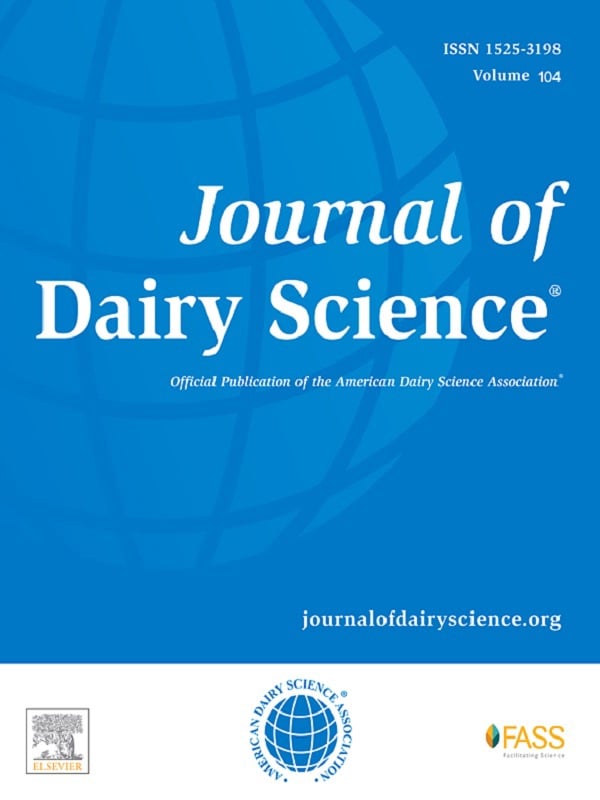Intestinal adaptations to energy source of milk replacer in neonatal dairy calves
By A. C. Welboren,1 B. Hatew,2 J. B. Renaud,3 L. N. Leal,4 J. Martín-Tereso,4 and M. A. Steele1,2*
1 Department of Animal Biosciences, University of Guelph, Guelph, ON, Canada, N1G 2W1
2 Department of Agricultural, Food and Nutritional Science, University of Alberta, Edmonton, AB, Canada, T6G 2P5
3 London Research and Development Centre, Agriculture and Agri-Food Canada, London, ON, Canada, N5V 4T3
4 Trouw Nutrition Research and Development, PO Box 299, 3800 AG, Amersfoort, the Netherlands
- Ruminants
- 2021
- Open Access
- Dairy
B. Hatew, D. L. Renaud, L. N. Leal, J. Martín-Tereso, M.A. Steele

ABSTRACT
Most milk replacers (MR) contain more lactose compared with whole milk, which, when fed at a large meal size, could influence gut barrier function in calves. This study evaluated how replacing lactose in MR with fat (on a wt/wt basis) affects intestinal histomorphology and permeability in neonatal dairy calves. Thirty-four Holstein-Friesian bull calves were blocked by dam parity and randomly assigned to 1 of 2 treatments (n = 17): a high-lactose (46.1% lactose, 18.0% crude fat, and 23.9% crude protein of dry matter) or a high-fat MR (HF; 39.9% lactose, 24.6% crude fat, and 24.0% crude protein of dry matter). Calves were individually housed and fed pooled colostrum at 1.5 h and 12 h postnatally, at 18 and 9% of metabolic body weight (BW0.75), respectively. From 24 h postnatally until the end of the study (d 7), calves were transitioned to be fed MR (prepared at 15% solids) at 18% of BW0.75 twice daily at 0700 and 1900 h. During postprandial sampling on d 6, intestinal permeability was assessed by mixing lactulose (1.03 g/kg of BW0.75) and d-mannitol (0.31 g/kg of BW0.75) into the morning meal without altering total meal volume. Sequential blood samples were collected via jugular catheter, and total urine was collected for 12 h to measure the marker content. Calves were euthanized 3 h after the morning meal on d 7, and gastrointestinal tract tissues and digesta were collected for analysis of histomorphology, digesta osmolality, and gene expression. The empty gastrointestinal tracts of HF calves were heavier, although length did not differ and differences in histomorphology were minor. Digesta osmolality changed along the tract without differences between treatments. Plasma lactulose was greater in HF, although plasma d-mannitol and the recovery of both markers in urine were unaffected. No significant differences were detected in gene expression, although HF calves tended to have lower expression of TJP1 and CLDN2 and higher expression of proinflammatory cytokine IL1B in ileum tissue. In conclusion, partially replacing lactose in MR with fat resulted in a heavier and more permeable gut, with minor histomorphological differences.